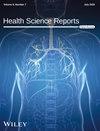Antimicrobial Susceptibility Patterns of Uropathogens: A Retrospective Study at a Primary Care Hospital in Ghana
Abstract
Background and Aims
Urinary tract infections are among the most common infections globally, with increasing rates of antibiotic resistance complicating their management. This study aimed to determine the prevalence, bacteriological profile, and antibiotic susceptibility patterns of uropathogens isolated from urine samples at Methodist Hospital, Wenchi, Ghana.
Methods
A retrospective study was conducted using data on urine culture and antibiotic susceptibility testing obtained from the Microbiology Unit of the Laboratory Department between March 2024 and January 2025.
Results
A total of 504 urine samples were analyzed, revealing a prevalence of urinary tract infections at 45.2%. The predominant pathogens were Gram-negative bacteria, with Klebsiella spp (12.3%) and Escherichia coli (10.1%) being the most frequently isolated organisms. Candida spp were also identified in 5.8% of the samples. Females accounted for 74.6% of the infections, with the highest prevalence observed among individuals aged 20–40 years. Antimicrobial susceptibility testing demonstrated significant resistance among bacterial isolates, with Klebsiella spp showing the highest resistance to Beta-lactams and Fluoroquinolones. Amikacin exhibited the lowest resistance rate (4.4%), making it a strong candidate for empirical therapy. Multi-drug resistance (MDR) was demonstrated by 72.7% of bacterial isolates, with Klebsiella spp and Escherichia coli showing the highest MDR rates.
Conclusion
The identified patterns of antimicrobial resistance highlight the critical importance of careful antibiotic selection to effectively manage urinary tract infections.

 求助内容:
求助内容: 应助结果提醒方式:
应助结果提醒方式:


